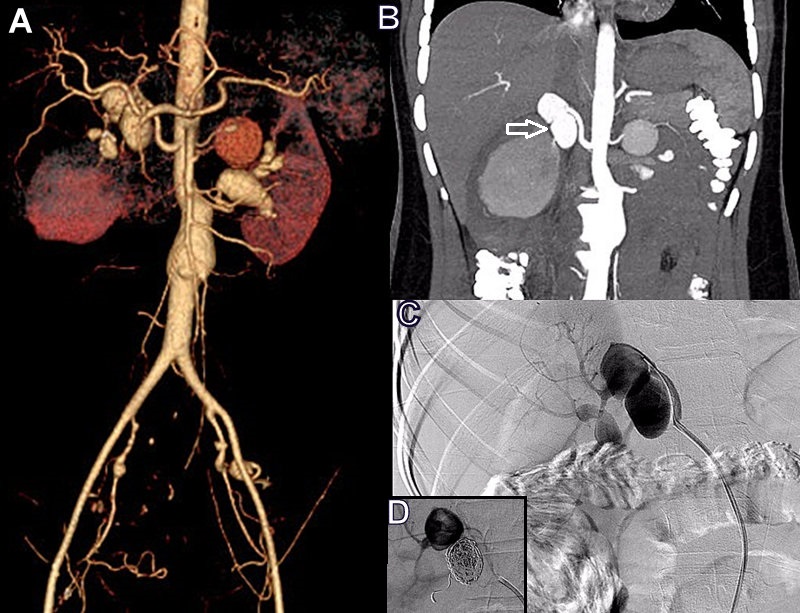Back to 2016 Annual Meeting Program
Multiple arterial aneurysms in a young Mexican female with possible Loeys-Dietz Syndrome
Carlos A Hinojosa, Javier E. Anaya-Ayala, Hugo Laparra-Escareno, Adriana Torres-Machorro, Rene Lizola
Instituto Nacional de Ciencias Medicas y Nutricion, Mexico City, Mexico
Background: Loeys-Dietz Syndrome (LDS) is an increasingly recognized autosomal-dominant connective tissue disorder with distinctive clinical manifestations including multiple arterial aneurysms, craniofacial and skeletal abnormalities caused by heterozygous mutations in genes encoding transforming growth factors B (TGFB 2), receptors 1 and 2 (TGFBR1 and TGFBR2) and SMAD 3
Clinical case: 17 year old female arrived to the Emergency Room with acute onset of abdominal pain located in the right hemiabdomen and radiated to her back. An abdominal computed tomography (CT) with contrast revealed a 26 millimeters (mm) infrarenal aortic and bilateral renal artery aneurysms (Right 67 X 46 mm, Left 43 x17 mm) with a right perinephric hematoma. She was taken emergently to the angiosuite; selective catheterization identified extravasation and ruptured right renal artery aneurysm, immediately treated with coil embolization. Once stable a gammagram demonstrated preserved renal function in both kidneys. Physical exam was consistent with clinical features of type II LDS and owing to its size, extension and the complex nature of the left renal aneurysm, we decided to performed an ex vivo arterial reconstruction using a ePTFE graft and renal autotransplantation in the left common iliac artery with cold and warm ischemia. The procedure allowed for maximum preservation of the renal parenchyma and function (postoperative creatinine 0.5 mg/dL). Two years later patient returned with expansion the aortic aneurysm sac (52 mm) and new aneurismal degenerations in the right renal artery, she underwent open aortic open repair with a Dacron graft and reconstruction and reimplatation of the right renal artery with ePTFE. Patient recovered well from the surgery; further imaging work up has revealed a fusiform aneurysm of the left vertebral artery. She is currently undergoing genetic testing to identify mutations on TGFB 2, TGFBR1, TGFBR2 and SMAD3 genes.
Conclusion: LDS is a complex and aggressive arteriopathy. Vascular surgeons should be aware of multiple aneurysm syndromes as the case described, that can involve not only aorta but splanchnic and peripheral blood vessels as well. Surgical or endovascular intervention have good clinical outcome, close surveillance is mandatory. 

Back to 2016 Annual Meeting Program
